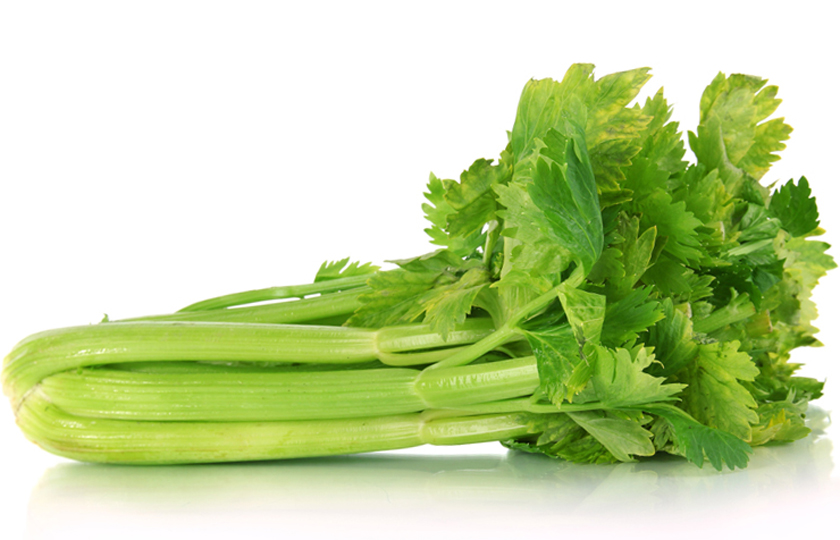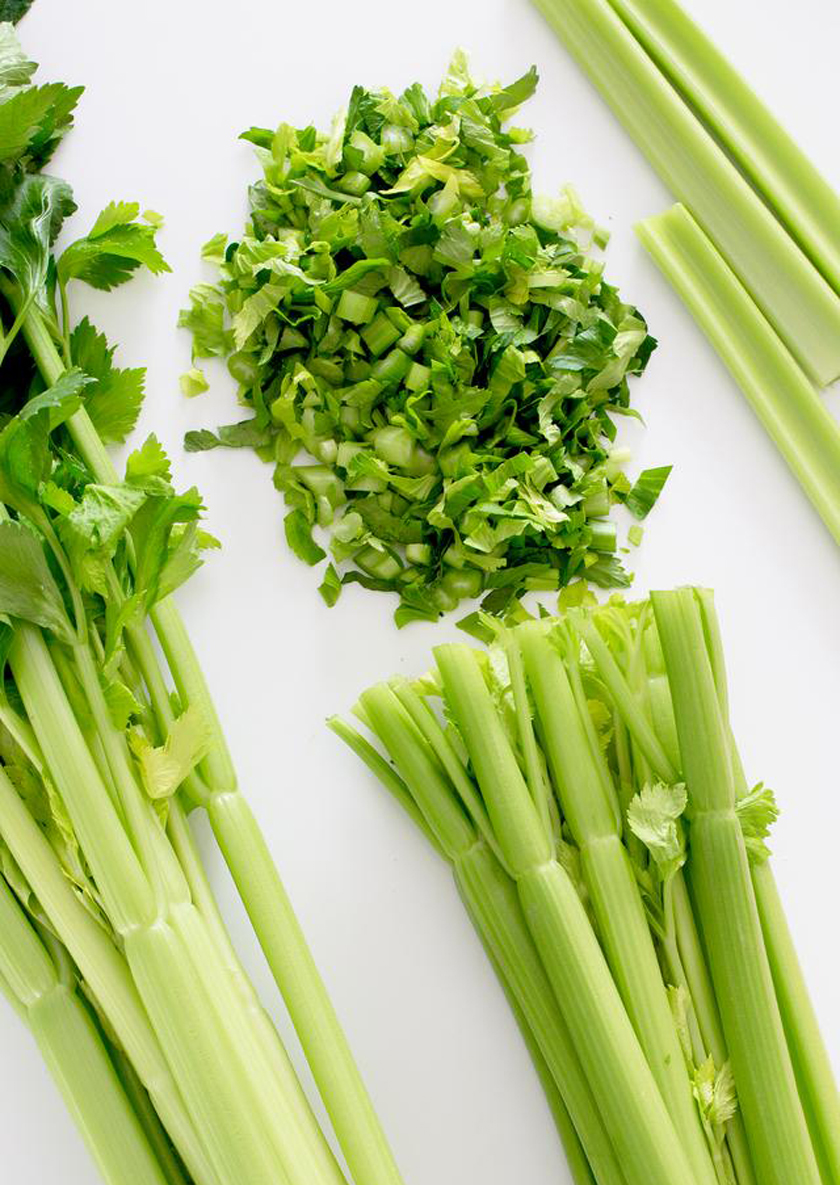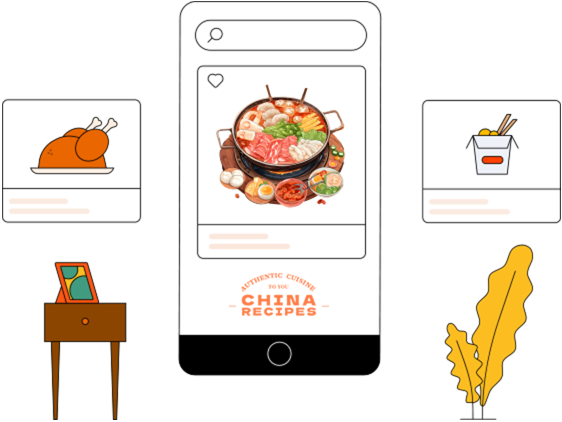Can You Freeze Celery Leaves? The Ultimate Practical Guide

It is found that many people always habitually discard the green celery leaves when dealing with celery. But do you know? Celery leaves are not only extremely nutritious but can also be stored for a long time through freezing! Today, I will teach you step by step the whole process of freezing celery leaves, from scientific principles to creative ways of eating, making this neglected green leaf a new favorite in the kitchen.
Can Celery Leaves Be Frozen?
Sure!
Compared to celery stalks, celery leaves have a thinner texture and less moisture, making them less likely to have their structure damaged by ice crystals during freezing.
Although frozen celery leaves will lose the crispness of fresh leaves, their unique herbal aroma and nutrients can still be retained, making them very suitable for cooking.
Key Points:
No blanching is required: The fibers of the leaves are fine, and they can be frozen directly.
After freezing, they are suitable for cooked dishes, such as soups, sauces, or stews, rather than eating raw directly.
Why Are Celery Leaves Worth Freezing?
Reduce waste: The nutritional value of celery leaves is even higher than that of the stalks. It's a pity to discard them.
Convenient storage: Frozen celery leaves can be taken out and used at any time, eliminating the need for frequent purchases.
Enhance flavor: Celery leaves have a strong aroma and are suitable for seasoning, soups, or sauces.
How to Freeze Celery Leaves?
Wash and dry:
Gently rub the celery leaves in clean water to remove dirt and impurities. Blot the moisture with kitchen paper.
Chop or keep whole:
Depending on your needs, chop the celery leaves into pieces (suitable for seasoning) or keep them whole (suitable for decoration).
Lay flat and freeze:
Lay the celery leaves flat on a baking sheet or tray, avoiding overlap. Put them in the freezer for 1 - 2 hours until the leaves are completely frozen hard.
Package and store:
Put the frozen celery leaves into a sealed bag, squeeze out the extra air, label the date, and store them in the freezer.
How to Use Frozen Celery Leaves?
Use directly:
When making vegetable broth, stews, or spaghetti sauce, there is no need to thaw. Take an appropriate amount of frozen celery leaves directly from the freezer and add them to the pot.
Frozen celery leaves will thaw quickly during the cooking process, releasing a strong aroma and adding layers to the dish.
Use after thawing:
If you want to use them in salads, dips, or as decoration, you need to thaw the frozen celery leaves at room temperature for 10 - 15 minutes in advance, or put them in the refrigerator's refrigeration compartment for slow thawing.
After thawing, the celery leaves can be chopped and mixed into sour cream to make a fresh vegetable dip; they can also be sprinkled on the surface of pizza as decoration after baking, adding a touch of green and freshness.

Are there still nutrients in frozen celery leaves?
Freezing has a relatively minor impact on the nutrients of celery leaves. The main nutrients lost are some vitamin C and folic acid, but the following components are still highly retained:
Antioxidants: Such as apigenin and flavonoids.
Minerals: Potassium, calcium, magnesium (resistant to high temperatures and insoluble in water).
Dietary fiber: Promotes intestinal health.
Can Frozen Celery Leaves Return to Normal?
Frozen celery leaves cannot completely return to the crisp state of fresh ones, but their flavor and nutritional value can still be fully utilized.
Due to the damage of the cell structure during the freezing process, the texture of thawed celery leaves will become soft and lose their crispness.
However, this does not affect their application in cooking. Especially in dishes that require long-term stewing and stirring, it can better release the flavor.
Can Chopped Celery Leaves Be Frozen?
Sure!
Chopped celery leaves are more suitable for freezing and have a wider range of application scenarios.
Freezing chopped celery leaves not only saves storage space but also makes them more convenient to use in cooking.
Specifically, you can put the chopped celery leaves into a sealed bag and flatten them into a thin slice as much as possible. In this way, you can easily break off the required amount after freezing; or you can put them into an ice cube tray and freeze them into "celery leaf ice cubes" to facilitate precise dosage control.
Chopped and frozen celery leaves are especially suitable for making fillings. For example, when making the vegetable filling of a burrito or the filling of Chinese dumplings, directly add chopped frozen celery leaves without thawing. They will thaw naturally during the process of stirring the filling and can also prevent the filling from becoming watery due to excessive moisture.
Can Celery Leaves Be Eaten? How?
Can celery leaves be eaten? And how should they be eaten?
Celery leaves are not only edible but also taste delicious.
The taste of celery leaves is more fragrant and more concentrated than that of celery stalks. They have a slight grassy aroma and can be used in the same way as coriander and parsley. Here are some of my favorite ways of eating them usually:
Add to soup: Sprinkle a handful at the end, just like adding coriander.
Mix with eggs: Make celery leaf and egg pancakes or egg fried rice.
Make herb sauce: Mix with basil and parsley to make a green sauce.
Make homemade herb salt: After drying, mix with sea salt and grind into seasoned salt.























